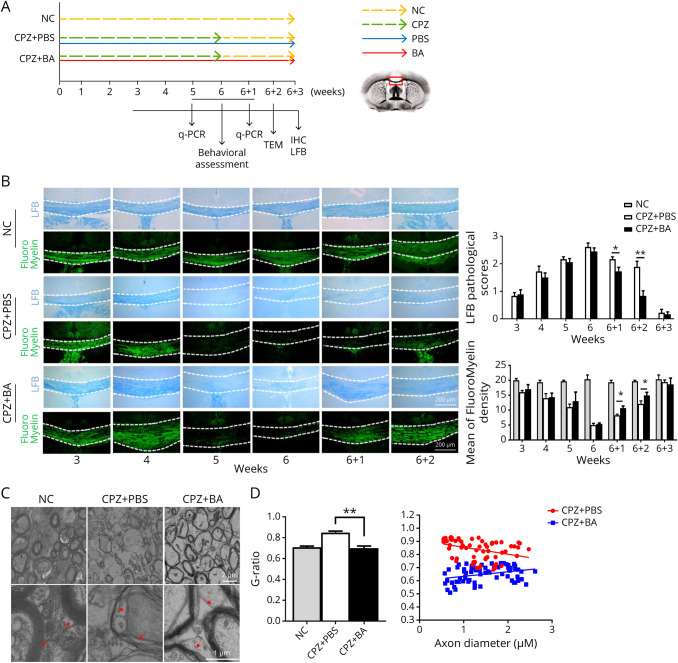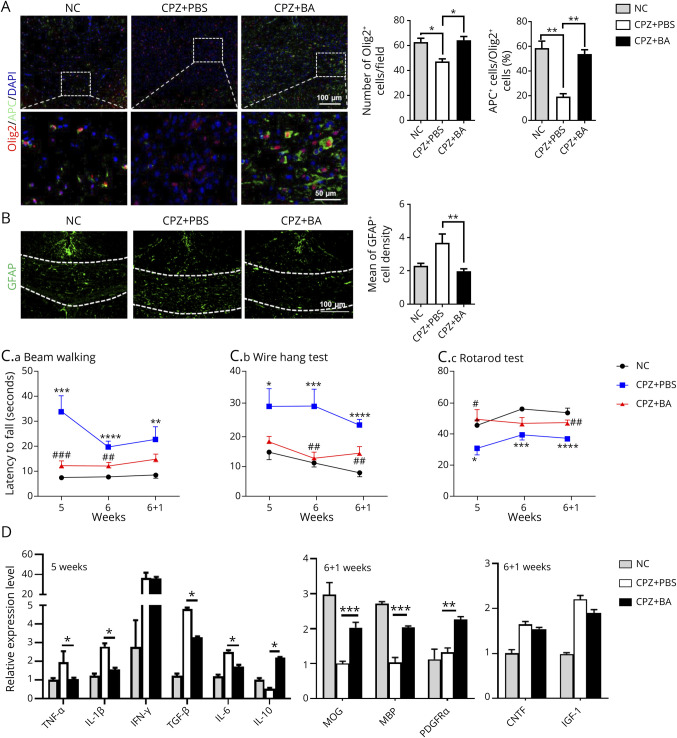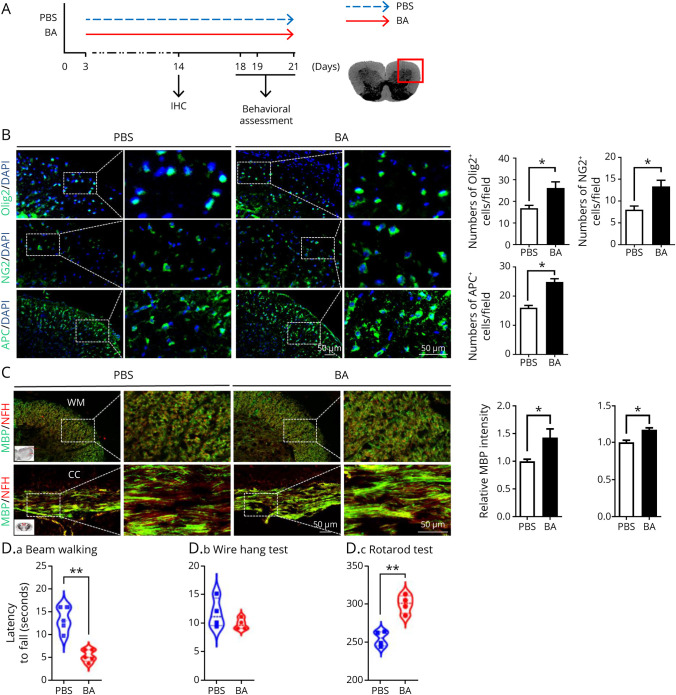Baicalin Promotes CNS Remyelination via PPARγ Signal Pathway.
Neurology(R) neuroimmunology & neuroinflammation
Pub Date : 2022-02-01
Print Date: 2022-03-01
DOI:10.1212/NXI.0000000000001142
引用次数: 8
Abstract
Background and Objectives Demyelinating diseases in the CNS are characterized by myelin sheath destruction or formation disorder that leads to severe neurologic dysfunction. Remission of such diseases is largely dependent on the differentiation of oligodendrocytes precursor cells (OPCs) into mature myelin-forming OLGs at the demyelinated lesions, which is defined as remyelination. We discover that baicalin (BA), a natural flavonoid, in addition to its well-known antiinflammatory effects, directly stimulates OLG maturation and CNS myelin repair. Methods To investigate the function of BA on CNS remyelination, we develop the complementary in vivo and in vitro models, including physiologic neonatal mouse CNS myelinogenesis model, pathologic cuprizone-induced (CPZ-induced) toxic demyelination model, and postnatal OLG maturation assay. Furthermore, molecular docking, pharmacologic regulation, and transgenic heterozygous mice were used to clarify the target and action of the mechanism of BA on myelin repair promotion. Results Administration of BA was not only merely effectively enhanced CNS myelinogenesis during postnatal development but also promoted remyelination and reversed the coordination movement disorder in the CPZ-induced toxic demyelination model. Of note, myelin-promoting effects of BA on myelination or regeneration is peroxisome proliferator-activated receptor γ (PPARγ) signaling-dependent. Discussion Our work demonstrated that BA promotes myelin production and regeneration by activating the PPARγ signal pathway and also confirmed that BA is an effective natural product for the treatment of demyelinating diseases.



黄芩苷通过PPARγ信号通路促进中枢神经系统再髓鞘形成
背景和目的:中枢神经系统脱髓鞘疾病的特征是髓鞘破坏或形成障碍,导致严重的神经功能障碍。这些疾病的缓解在很大程度上依赖于在脱髓鞘病变处少突胶质细胞前体细胞(OPCs)分化为成熟的髓鞘形成的OLGs,这被定义为髓鞘再生。我们发现黄芩苷(BA)是一种天然类黄酮,除了具有众所周知的抗炎作用外,还能直接刺激OLG成熟和中枢神经系统髓磷脂修复。方法:为了研究BA对中枢神经系统髓鞘再生的作用,我们建立了生理性新生小鼠中枢神经系统髓鞘形成模型、病理性铜酮诱导(cpz)毒性脱髓鞘模型和出生后OLG成熟实验。进一步通过分子对接、药理调控、转基因杂合小鼠等方法,阐明BA促进髓鞘修复的靶点和作用机制。结果:在cpz诱导的中毒性脱髓鞘模型中,BA不仅能有效促进出生后中枢神经系统髓鞘的形成,还能促进髓鞘再生,逆转协调运动障碍。值得注意的是,BA对髓鞘形成或再生的髓鞘促进作用依赖于过氧化物酶体增殖激活受体γ (PPARγ)信号。讨论:我们的工作证明了BA通过激活PPARγ信号通路促进髓磷脂的产生和再生,也证实了BA是治疗脱髓鞘疾病的有效天然产物。
本文章由计算机程序翻译,如有差异,请以英文原文为准。
求助全文
约1分钟内获得全文
求助全文

 求助内容:
求助内容: 应助结果提醒方式:
应助结果提醒方式:


